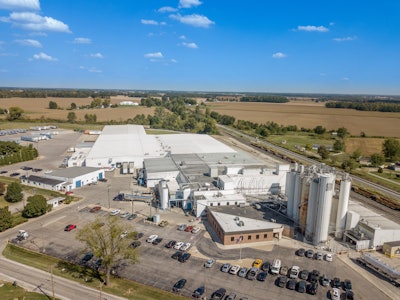Enterprise integration in manufacturing is a hot topic these days, and food producers are recognizing that advances in industrial networking are creating opportunities for companies to connect disparate application platforms. Gaining efficiencies with raw material management, improved quality control processes and optimizing uptime are just some of the benefits of integrated enterprise applications.
One obstacle to this manufacturing objective is plant acquisitions and the legacy platform integration issues that come along with it.
One recent example of this type of challenge was Mennel Milling Company’s acquisition of a General Mills’ bakery and packaging plant in 2016. Mennel expanded its business model with this acquisition by offering more than just ingredients and moved into selling a full line of bakery mix products.
Part of the plant acquisition agreement included the elimination of the existing SAP enterprise resource planning (ERP) software and IBM’s Maximo enterprise asset management (EAM) platform. Mennel’s ERP platform is Microsoft’s Dynamics, and the plant acquisition created an opportunity for the food producer to move to the cloud-based Dynamics 365 business platform to also manage fulfillment forecasting and warehousing for the plant.
Mennel enlisted consulting company enVista to integrate Dynamics 365, Microsoft Azure, SharePoint and Office 365. For the manufacturing operations management component, Stone Technologies, Inc., a system integrator based in St. Louis, Missouri, oversaw the removal of a custom manufacturing execution system (MES) and connection of the new MES to Mennel’s new business platform.
“We had about an eight-month window to get Mennel converted over to the new platforms,” says Robert Donlon, senior MES project manager at Stone Technologies. “It was a very tight timeline with multiple applications being converted to new or updated platforms.”
Regarding applications, this legacy plant featured a custom MES application and Aveva’s Wonderware supervisory control and data acquisition (SCADA) platform. The system integration would include a new interface approach to move operations data to the ERP system.
“This custom MES system did not interact with the older ERP system,” says Donlon. “Operators manually entered work orders into the manufacturing quality information system — the MES system.” For example, packaging lines pushed product information from final pallets from the old SCADA system to the WMS — Red Prairie — and then manually entered into SAP.
For the new configuration, Stone Technologies used a combination of industry standards from ISA-95 and an enterprise integrator tool from Aveva.
“Mennel uses the B2MML messaging format and enterprise integrator tool — middleware — to bring work orders down to the plant floor and into the quality system,” says Donlon. B2MML is an XML implementation of the ANSI/ISA-95 family of standards and consists of a set of XML schemas written using the World Wide Web Consortium’s XML Schema language (XSD) that implement the data models in the ISA-95 standard.
“The Aveva integrator tool grabbed product information, counts, sampled results and moved that information from the MES to Dynamic 365 ERP,” says Donlon. “Comparing it to the previous system, we added two connections that didn’t exist previously by using some modern applications.” The enterprise integrator translates plant floor information to a B2MML messaging format.
Going forward, Mennel is looking to build upon its initial modernization effort, make more improvements to its quality system, and move toward more of a workflow system.
For food producers in the digital transformation era, there’s no standing still until all applications are connected.




















